This installment in the Music Gallery Glossary of Guitar Terms covers What is Rosewood in the context of acoustic and electric guitars. Rosewood is an exotic wood that grows in a number of geographical locations just not the USA (hence EXOTIC). Wikipedia defines it as “any of a number of richly hued timbers, often brownish with darker veining, but found in many different hues." Well, that’s SUPER informative, huh? Maybe these pics will help.
Brazilian, Guatemalan, and East Indian Rosewood
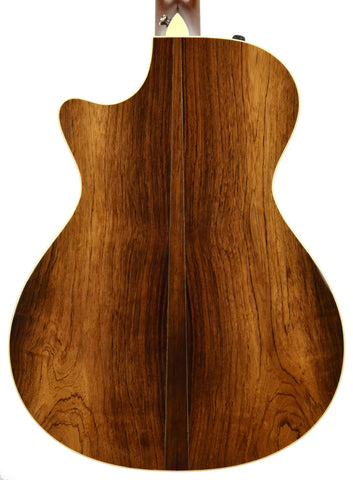
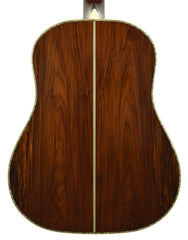
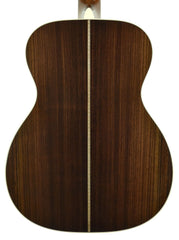
Let’s narrow things down a little with some science I that pretend grasp. All Genuine Rosewood belong to the Dalbergia Genus. Many get their “street name” by where they grew. Simple enough! Doesn't take Bill Degrasse Sagan to process that!
The most commonly ‘built-in’ Rosewood you’ll find on a guitar is Indian Rosewood, so that’s what wood we will use as our baseline for this conversation, though others will be brought up. Harvested in India, this wood is also grown on plantations in Pakistan. Used widely for fingerboards and the back and sides of acoustic guitars. Fender, Gibson, Martin, Taylor, PRS and literally every builder who can afford to use Rosewood does. It's a fantastic tonewood with deep roots in both the acoustic and electric guitar worlds.
Here it is in tree form...

Visually: from light brown to almost uniformly black, sometimes with colors bars or over tones in purple, red, orange, and yellow. When it dries out it gets lighter in color, and can have an ashy appearance. It’s dark, dense, and usually has parallel streaks of brown to dark brown running along one another. The pores are super tight and not visible to the naked eye on the good stuff. Over the last 2 years we have seen some ugly, porous rosewood showing up as fingerboards. Sad face. Crying Face.
East Indian Rosewood looking all kinds of different on 3 different guitars! Heck, the M36 in the middle is a great example of how different one species of Rosewood can be.
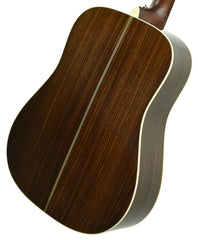

Janka Hardness: The hardness factor varies with the types of rosewood so again we will base this of East Indian. At 2440, Rosewood is certainly hard enough to be a fingerboard, and makes for great back and sides material, especially due to how hard it is to dent combined with it’s harmonic complexity. Softer woods like Mahogany or Sapele are easier to leave impressions, dings, or dents in. Let’s be reasonable though and NOT test this thought out. Janka Neighbors of East Indian Rosewood would be Bubinga and Purpleheart.
Workability: Easy for the most part, doesn’t require a lot of finishing to be ready to rock. Can be tricky with cutting and gluing but the maintenance is easy and it’s exceptionally durable. Needs to be oiled a couple times a year when exposed to dry climates. Can be cleaned easily, even with 0000 steel wool for heavy grime.
Tone when used as Back and Sides: *Discussing this is like discussing flavor. Some love cilantro, others think it tastes like soap. They are both right. So…. here we go!* The tone of East Indian Rosewood in general is rich with low end, presents a reduced amount of mid range projection, and a sweet, bell-like top end. The bass seems to provide a soothing harmonic layer for mids and highs to articulate and sparkle over. The mid range is scooped compared to the highs and lows, but not so deeply that articulation is lost. I find Rosewood does not sound it’s best played hard with a pick but with a softer touch and a more dynamic approach, You wanna strum hard, that’s mahogany, that’s maple. A great D-45 seems to throw harmonics all over the room, providing a very 3-D sonic experience, when compared to the direct beam of sound a D-18 produces with it’s Mahogany back and sides.
Tonal Impact for Fingerboard: We have to compare to maple here because that’s the most popular alternative and makes sense for a general conversation. I find Rosewood swallows a bit of a strings plosive. I have used the same Tele body with both a Maple neck/board and a Maple/Rosewood neck, built almost identically. The Rosewood doesn’t present as bright an experience to my left ear and the assertive clucks and clicks I am trying require more right hand oomph to generate. I switch to the maple/maple neck and BAM! All that stuff is right where it should be. On the other hand, when I need warmth, sustain, and body, Maple does not cut it for me. I wants Rosewood and bumhuckers. Rosewood seems to thicken up plain strings, or rather take the treble down and make the mid’s the focal point. I have, love, and respect both for what they offer.
Let’s get back to some facts!
Other species are more rare, command higher premiums, and have their own visual characteristics. The most sought after and expensive being Brazilian Rosewood. The species had restrictions placed upon it’s trade and sale for years now, well before CITES. Coveted for it’s lore of being the Best Tonewood Ever (even as a fingerboard!), just mentioning that a guitar has it elevates to a whole other level. Heck, try internationally shipping a guitar built with it to see how controlled this timber has gotten! Don’t believe me? Ask Paul Reed Smith…
USA Only is hand written on all PRS Guitars made with Brazilian Rosewood. Certificate Included!
Amazonian, Madagascar, Burmese, Nicaragua (also called Cocobolo), Guatemalan, Panamanian, and Honduran Rosewoods are all available and used in manufacturing many musical instrument parts. This is the tip of the iceberg. Head to wikipedia and check out the full list….
Then things get messy… Santos Rosewood, also called Bolivian Rosewood, AKA PAU FERRO! “WTF? I though Pau Ferro WASN’T Rosewood and therefore SUCKED!” Well, even though Rosewood is in (some of) it’s name(s), it is not a true Rosewood since it does not have Dalbergia in it’s name, rather it is a Machaerium. I find this part of the conversation very interesting… If Pau Ferro IS a Rosewood, why did it get excluded from the CITES disaster, especially knowing Pau Ferro trees typically don’t harvest large quantities of lumber. If it IS NOT a Rosewood, for the Love of Pete, why call it one?! #Marketing
Honestly, that's a beautiful fingerboard regardless of whether or not Pau Ferro is a legit Rosewood!

To make things messier… Not all trees in the Dalbergia Genus yield Rosewood's. African Blackwood, Brazilian Kingwood and Cocobolo all fit into that category yet produce exceptionally high quality timbers, all of which surpass most Rosewood on the "Delectability Scale" (that means price for raw materials, btw) aside from Brazilian Rosewood, of course.
African Blackwood, Brazilian Kingwood, and Cocobolo

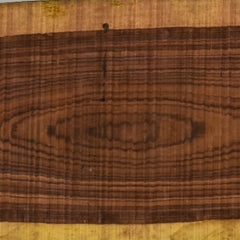
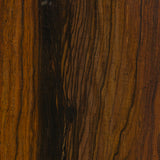
If there is one thing I have learned in researching Rosewood, it’s confusing. Plus, there is a lot of garbage Rosewood out there and other species that are confused/lied about/actually suitable substitutes if not upgrades. The quality of Rosewood we have seen on production line guitars in certainly not as nice as it has been in previous decades. However, with the dissolving of the CITES thang’ we should start to see some better looking pieces, though with a premium attached to them, OF COURSE! On the plus side, we have enough Maple to keep on trucking :)
I hope you found the facts and opinions here helpful in your quest for guitar knowledge! This edition of Matt's Blog was penned by Mathew Jenkins who believes that Rosewood by any other name would sound just as sweet.


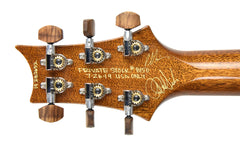
Great overview of rosewood and its role in guitar wood. At https://pacificrimtonewoods.com/ , we appreciate seeing clear explanations that help musicians understand the value of responsibly sourced tonewoods.